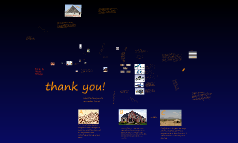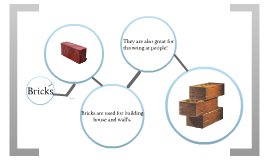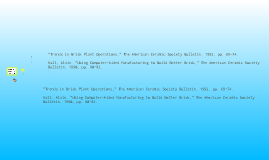Bricks
Transcript: Not all innovations are all "high tech" we have come a long way with bricks alone! from brick only made of clay... to then from these working conditions... to But I'm getting ahead of myself, aren’t I? Let’s start at the beginning... Bricks have been found in buildings as old as 7,500 B. C. in Crayoning, east Anatolia, Turkey. Bricks were made by pressing clay, sand, and water by foot then pressing them into wooden blocks, letting the sun bake them and firing them to building strength in a kiln. In the older version they didn't have kilns, only the sun to dry their bricks! The invention of the fired brick, not the older version sun-dried brick believed to arisen around third millennium, BC. It enabled sturdier building because it was more resistant to the wind and rain. The new fired bricks would heat up during the day and release the heat at night, which is useful in extreme climates such as the desert. Because of their sturdiness they were used in the building of sacred temples hoping that they would last forever, such as the pyramids dating back to 1814 B. C. Archaeologists have dug up brick dated back to 10,000 years ago, made simply out of mud from overflowing rivers, they were molded by hand and set out in the sun to dry. Tar was found as a mortar to hold the buildings together, or anything that they may have built them with. Like the Egyptians, ever since 2920 BC the Egyptians have fascinated us with their commodious brick pyramids, made of; sand, straw- leftovers from the wheat fields, water from the Nile that supported every ethic in an Egyptian life. These pyramids builders have had several names, aliens, slaves, Hebrew slaves... But while we may not know how they lifted the hefty chunks of earth , we do know of their process. First, the early pyramids were made of pure rock, usually the local limestone. And Granite for the internal decorations. At times, the outside of the pyramid was also decorated with granite, like the Pyramid of Menakaure. The early pyramids would slope inward, there layers of stone (courses) but as the pyramids that were built sloping inward were found to be unstable the early builders decided upon outward sloping pyramids for looks, and stability. American brick currently is about 8 inches (20.3 cm) long, 3 3/4 in. (8.26cm) wide, and 2 1/4 in. (5.7cm) thick; Almost all of our brick are this size but other countries have their own personal sizes which can vary on what area you live in of that country. There are also diferent sizes of bricks for diferent jobs, like the giant skyscraper bricks! Think of all of the diferent bricks that you have seen throughout your life? Day even? Brisks are not only found in the infamous 'red' but have many shapes, sizes, and shades. Some of them are: Past Working Conditions Crude working conditions, all work had to be outside. So any rain and any bricks thay were trying to harden in the sun would return to mush. Then erode and deposit itself all around the work sight! Then its back to another hour of digging up the clay, sofening it with bucket load after heafy bucket load from the closest well. (usualy twenty yards away.) Once the clay was soft enugh to step onto they would stomp, or soften the clay. After the soggy clay was harded by the sun it would be set into a kiln that was constructed solely of bricks made that year, after sitting in the kiln for several days they would be cautiously taken out and cooled. Then they are redy to be sold! Present working conditions: Imagine being around noisy machinery all day inside a nice air conditioned facility. You go around flipping on switches and examining the brick coming out. Easier than pie right? think again! The whipping fork (A) works rapidly while the feed box (B) moves up towards the mold box,(C) then the equalization of material feed and the consistency of the product's intensity are insured. The whole process uses a PLC, (also called a Programable Logic Controllers, they are small computers inside the machinery to help move the asembly line along.) aptitude control and dialogue system of human-machine interface, easy to analyze the chance signal, fault diagnosis and parameters setting. This exact system can be multiplied to add onto many of other types of builds: This build is called QT8-15 Its speciality is that it makes almost twice as many bricks as the original in one turn around. Block: 390mm x 190mm x 190mm Multiholed brick: 240mm x 115mm x 53mm Sandard Brick: 240mm x 115mm x 53mm This build (QT10-15) makes the bricks have a sharpness to them, uniformed. Block: 390mm x 190mm x 190mm Multiholed brick: 240mm x 115mm x 90mm Standard brick: 240mm x 115mm x 53mm This build is called QT4-30, it uses hydraulic driver to produce concrete road pavers and whole bricks, and all wall bricks. bricks 390mm × 190mm × 190mm hole bricks 240×115×90mm standard bricks 240mm × 115mm × 53mm pavers 225mm × 112.5mm × 60mm this is the first section of the assembly line, it give the shape to the brick.There

















